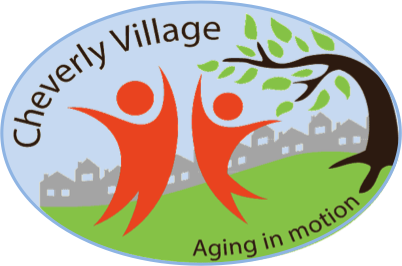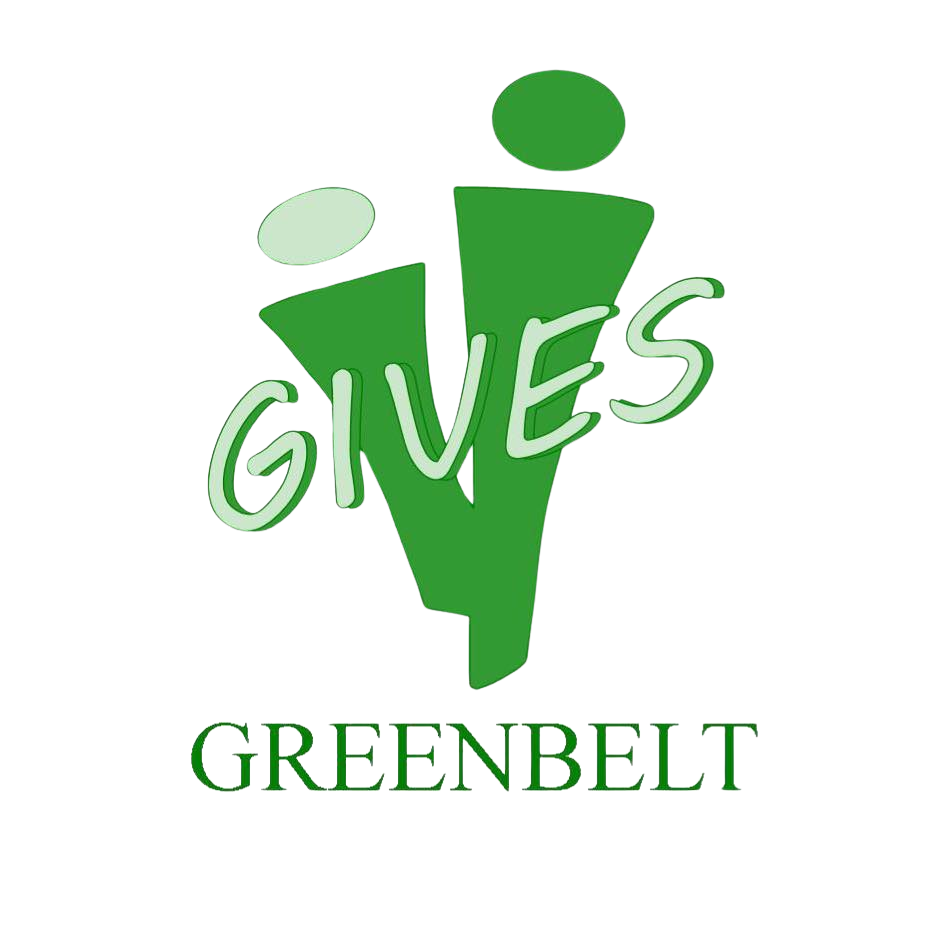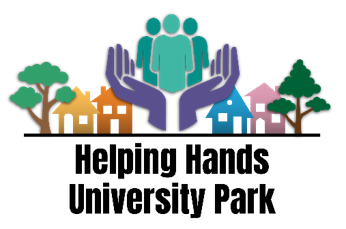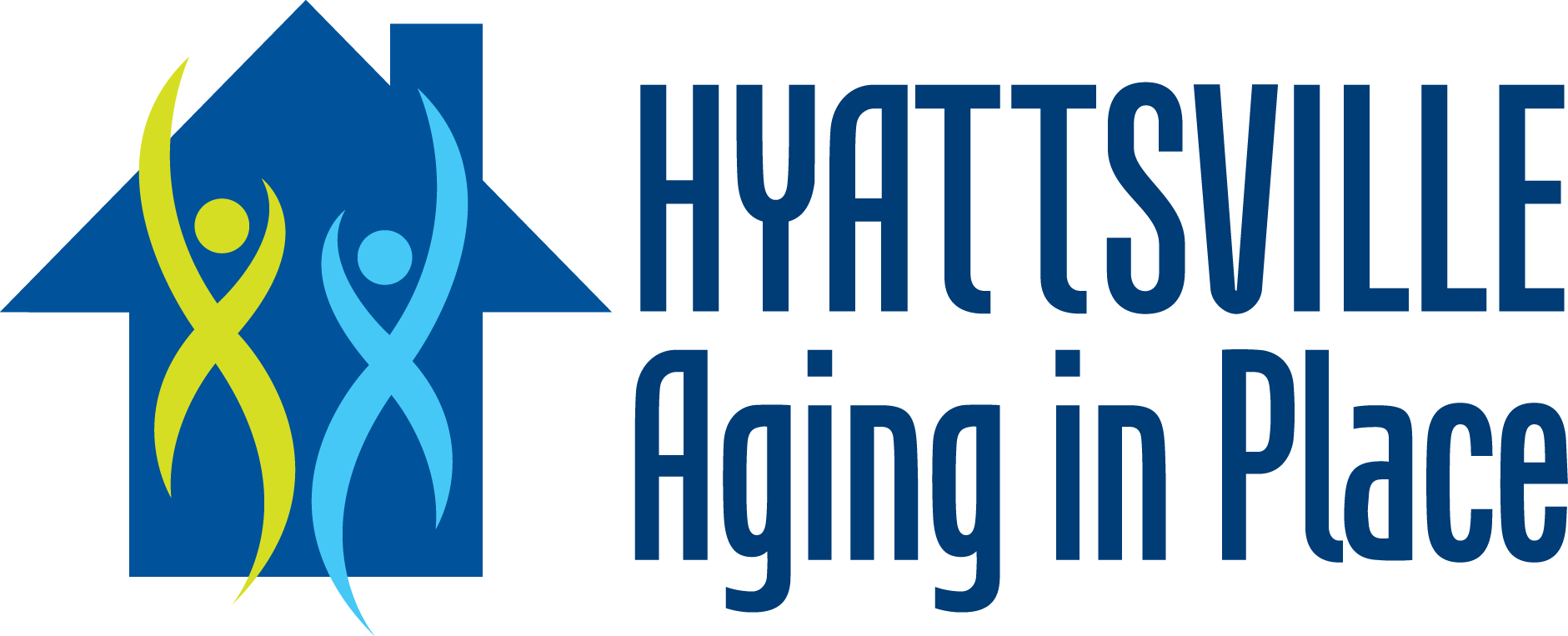As of January 2024, there are five Villages in Prince George’s County. Together they illustrate the axiom “If you’ve seen one Village, you’ve seen one Village.” They were all founded at different times and in different ways, but each offers lessons that other Villages can learn from to help build the sort of Village that best serves your community. New Villages can and should build the Village that suits their community’s needs, however those are defined.
Select a Village Name Below to Learn More About How It Operates
Cheverly Village • GIVES • Helping Hands University Park • Hyattsville Aging in Place • Neighbors Helping Neighbors College Park
 Cheverly Village
Cheverly Village
Area Served: Cheverly, Maryland, and immediately adjacent unincorporated areas
Year Founded: 2016
501(c)(3) status: Yes. Received 501(c)(3) in April 2016
- How did your Village get started?
The inspiration to form a Cheverly Village came from some of the earliest “Villages” in other communities, including nearby Capitol Hill Village. In the spring of 2014, after attending a meeting of a network of Washington-area villages, some Cheverly residents decided to build support for a Cheverly Village. They organized a public discussion of “Aging in Place” at which representatives of three area villages discussed their experiences. As a result, several more Cheverly residents joined the effort and by July 2014, a Cheverly Village Planning Committee was meeting regularly. Conveners Diane La Voy and Laila Riazi shepherded the Committee from its inception to May 2016, when the incorporated Cheverly Village elected its Founding Board of Directors.
As a first task, Committee participants met with community leaders and members of virtually every organized group in Cheverly. They introduced the idea of a village and elicited ideas for how a future Cheverly Village might work with or complement the services provided by the other voluntary organizations. Other Committee members researched the experiences of villages across the Washington area.
The Committee grew in response to many outreach efforts. By December 2015, the Committee had a list of some 190 residents who asked to be kept informed of progress in organizing the village. Of these, some 50 engaged regularly or occasionally in the Committee’s work.
To support its deliberations and planning, the Committee formed several sub-committees, or teams, which worked in various areas, including designing and implementing a household survey, setting standards for services, developing a business plan, and preparing for incorporation and 501(c)(3) status as a nonprofit. In addition, several ad hoc teams planned events and distributed materials. Early in 2015 the Committee established a temporary fiduciary sponsor relationship with a Cheverly-based nonprofit, Newspapers in Education, Inc., permitting it to receive tax-free donations until it had obtained its own status as a nonprofit organization.
- What is the size of your Village (both geographically and in terms of number of people served)?
Cheverly Village is a small, intergenerational village, helping older adults and other residents of Cheverly and immediately adjacent unincorporated margins to stay in community and age in motion. We currently have 67 dues-paying members and 70+ community volunteers. Beyond the services and social and educational activities provided to our Village members, many of our presentations and programs are open to any interested resident. The Town of Cheverly is an incorporated municipality of approximately 1.35 square miles. The community has roughly 6,200 residents, 19% of whom are over 65 years of age.
More information is on the Cheverly Village website.
- What is your governance structure?
Cheverly Village operates via a Board, Committee, and Team structure. Our Board of Directors can extend to nine members and includes the officer positions of president, the opportunity for two vice presidents, treasurer, and secretary. There are two “standing” board committees, the Executive Committee, made up of the officers of the Board; and a Governance Committee, responsible for Board development, nominating, and ethics. Board members are limited to two consecutive two-year terms and can return to the board after a year “break.”
Central to the success of our Village structure are our six working teams. The work of Cheverly Village is organized across Member Services, Program & Events, Volunteer Support, Community Outreach, Administration & Finance, and Development & Outreach. Our Team approach opens decision-making and collaboration to Village members, volunteers, and community stakeholders.
This past year, Cheverly Village has engaged two contractors, one, as-needed, professional accounting support, and the other for “up to” half-time program administrative support for our volunteer board and teams.
- What sorts of services do you offer and how do you fill service requests?
Cheverly Village coordinates the efforts of trained volunteers to provide services to Village members. It brings together Cheverlians of all ages to strengthen community and age in motion. Volunteers are your neighbors and all volunteers receive training and complete background checks. Village driver volunteers receive additional safe driver training and complete an additional driver background check.
- Do you charge any fees? How much?
Yes, there is a membership fee to join Cheverly Village, which is set on a sliding scale according to household income level. Membership fees range from $10 to $55 a month. Should even sliding scale fees prove an obstacle to membership, Cheverly Village finds a way, as we are fully committed to making membership affordable for anyone who can benefit from Village social connection and volunteer supports.
- What other funding sources do you rely on?
Outside of our membership fees, Cheverly village relies on individual donations and grant support. We have received grants from the Prince George’s County Council and other community-based grantmaking organizations. Once we successfully completed our village building community process, our Village was extremely fortunate to benefit from a $10,000 “start-up” donation from a supportive community social investor.
- What are the best and the most challenging aspects of how your Village is organized?
In one word, our best and most challenging aspect of our Village is sustainability. A good number of our members are also volunteers and leaders within Cheverly Village. We are all busy people who are challenged to balance our full lives and diverse interests. To thrive, our Village needs to continue to recruit and offer rewarding experiences to new members, volunteers, leaders, ideas, and perspectives. We believe that securing limited contract accounting and program administration support will increase our organizational sustainability by freeing our volunteer Teams and Board of Directors to engage their strengths.
 GIVES: Greenbelt Intergenerational Volunteer Exchange Service
GIVES: Greenbelt Intergenerational Volunteer Exchange Service
Area Served: Greenbelt, Maryland
Year Founded: 1995
501(c)(3) status: tax-exempt/non-profit
- How did your Village get started?
GIVES was founded in 1995 by a community coalition gathered by the Senior Citizens Advisory Committee. It started with an interest in making it easier for seniors to stay in their homes as they age.
- What is the size of your Village (both geographically and in terms of number of people served)?
GIVES provides rides to City of Greenbelt residents within a 10-mile radius.
- What is your governance structure?
We have a board of directors made up of a president, vice president, treasurer, and secretary who are elected every two years in odd numbered years, and seven other board members who are elected every two years in even numbered years. Our board meets four times a year, followed by a meeting of the general membership two weeks later. We have a set of by-laws and our meetings follow Robert’s Rules of Order.
- What sorts of services do you offer and how do you fill service requests?
Currently, we offer transportation for medical, shopping, personal, spiritual and personal reasons; respite care, pet sitting, and reading/letter writing. Our office volunteers take service requests and assist people in becoming a member. We provide each member with a copy of our Membership Manual and offer a brief orientation, if desired.
- Do you charge any fees? How much?
No fees are charged.
- What other funding sources do you rely on?
We rely on our office space, utilities, and insurance which are provided by the City of Greenbelt. The Jewish Council for the Aging of Greater Washington provides us with our online scheduling system, VillageRides, and member database. JCA also helps fund our advertising/promotional materials, training and certifying our drivers including background checks, and monthly meetings (which are optional) for the Villages to provide support from and for each other.
- What are the best and the most challenging aspects of how your Village is organized?
The best aspects include the use of the JCA scheduling systems and support, as well as the fact that we are all volunteers who are here as neighbors helping neighbors.
The most challenging aspects include recruiting new members who are willing to provide services, especially transportation. The majority of our members are 60 years old and older and we would like to recruit more volunteers from the 18–59 age group.
 Helping Hands University Park (HHUP)
Helping Hands University Park (HHUP)
Area Served: Township of University Park
Year Founded: 2019
501(c)(3) status: none
- How did your Village get started?
Originally formed as an independent small handful of volunteers recruited by one resident couple.
- What is the size of your Village (both geographically and in terms of number of people served)?
According to the U.S. Census Bureau, the town has a total area of 0.50 square miles (1.29 km) containing 897 households. As of the 2020 census, the population was 2,454. (approx. 22% 65 or older)
- What is your governance structure?
HHUP was, after organizing began to progress, in 2019 established as a Town Committee, appointed by the University Park Town Council per Section 2-103 of the Town Ordinances. Like other special committees, its composition includes town residents and a town council member. Except for the Town Council liaison, all Executive Committee members serve on a volunteer basis, meeting monthly.
- What sorts of services do you offer and how do you fill service requests?
We provide services (rides, errands, small home chores, etc.)using volunteers, organize educational programs and social activities, and use partnerships with other individuals and organizations that complement our mission.
- Do you charge any fees?
No.
- What other funding sources do you rely on?
As a committee of the Town Council, we receive funding included in the town’s annual budget for our administrative and operating costs. Monetary donations from HHUP members are managed by the town and reside in a separate fund that carries over from one budget year to the next. We also, through grants and donations, maintain a Temporary Assistance Fund (TAF) to help HHUP members who need temporary services and/or financial assistance.
- What are the best and the most challenging aspects of how your Village is organized?
Best: We are integrated into and funded as part of the town government.
Challenging: 1. Volunteer Management — recruiting, maintaining and updating rosters, providing recognition, etc. 2. Members participation — motivating members to ask for services.
 Hyattsville Aging in Place (HAP)
Hyattsville Aging in Place (HAP)
Area Served: Residents of City of Hyattsville (for direct service, rides, house and yard work); Prince George’s County (for information and referral)
Year Founded: 2011
501(c)(3) status: Received 501(c)(3) status in August 2012
- How did your Village get started?
A neighbor who had been diagnosed with cancer needed support. Friends met to coordinate support and became aware of the Village model in Beacon Hill (Boston) and programs like it near us in DC and Greenbelt (GIVES, GAIL). We discovered the network of Villages in DC, Montgomery County and Virginia, obtained a copy of the Montgomery County Village Blueprint, and decided that we could serve all of Hyattsville. We started holding informational meetings in 2011 and incorporated and applied for a 501(c)(3) designation in 2012. Volunteer training and services began in 2013.
- What is the size of your Village (both geographically and in terms of number of people served)?
HAP serves all senior residents over age 60 in the City of Hyattsville (2.71 square miles, 21,000 residents in the 2020 census, about 1/3 African American, 1/3 Hispanic and 1/3 white.) We estimate about 2,225 to be seniors over 65. HAP had 100 members in 2023, and 35 active volunteers.
- What is your governance structure?
HAP has a nine-member Board of Directors; all are volunteer. HAPs’ leadership team includes the board secretary, board treasurer and board vice chair.
HAP has two main committees: a Volunteer Steering Committee that recruits, trains and supports all Volunteers, and an Outreach Committee that recruits and supports Neighbors or members who are involved in programs or receive services. A Phone Tree maintains contact with all Neighbors receiving services. HAP has a Finance Committee that creates and oversees the budget.
HAP pays two consultants, one to coordinate HAPs communications, social media and website; one to help with bookkeeping.
- What sorts of services do you offer and how do you fill service requests?
HAP offers rides (especially, to medical appointments and groceries), friendly visits and calls, yard and snow assistance, small household repairs and assistance, a food program, information and referrals. Basically, we try to meet the needs of Hyattsville’s older adults. HAP also maintains a lending closet of medical supports (wheel chairs, walkers and other common items). A food program delivers twice a month to about 40 senior families — fresh vegetables and fruit during the growing season, vegetables and a hot meal in the late fall and winter months. HAP also offers a Valentine surprise delivery, and a holiday luncheon. Much of our work includes partnerships, with local schools, farmer’s markets, scout troops, local restaurants, other area Villages, the City of Hyattsville, etc.
In addition to direct services, HAP also conducts regular programs, offered online and in person, on a variety of topics, including healthy eating, local history, arts, culture, and sciences, as well as essential documents. The monthly “Corridor Conversations” online program focuses on the culture and residents along the Route 1 Corridor, engaging residents and addressing social isolation.
HAP uses an online database tool, VillageRides, offered free by the Jewish Council for the Aging, which allows us to coordinate our rides, maintain records on our members and fill and track other requests automatically. Coordinators who answer the phone record the need (day, time, what is needed) and email it to volunteer dispatchers who send it to volunteers. Volunteers determine if it fits their schedule and respond. There are no minimum requirements. All volunteers must submit to background and driving record check and receive training.
- Do you charge any fees? How much?
Yes, HAP has a membership fee of $35 a year for an individual and $40 a year for a family.
- What other funding sources do you rely on?
HAP’s funding is a combination of membership, donations, and grants, and must be raised annually. In 2023, grants totaled $15,000 from the City of Hyattsville, the County Partnership program and the Hyattsville Community Foundation, largely supporting HAP’s food program. Prior funders include The Greater Washington Community Foundation, the Prince George’s County Council, and the Anacostia Trails Heritage Area. HAP also holds a fundraiser at Franklins restaurant every year. Total revenues in 2023 were: $24,000.
HAP received a bequest from an early member which Board policy limits contributions to the budget of no more than 5% a year, unless specifically approved by the Board.
- What are the best and the most challenging aspects of how your Village is organized?
They are the same — HAP’s all volunteer structure makes it very flexible and creative. But it also puts heavy reliance on volunteers who are willing to put in the time which, over time, raises questions of sustainability. HAP now is considering hiring a part-time program coordinator.
 Neighbors Helping Neighbors – College Park (NHN-CP)
Neighbors Helping Neighbors – College Park (NHN-CP)
Area Served: College Park, Maryland
Year Founded: 2015
501(c)(3) status: Received 501(c)(3) status in 2017
- How did your Village get started?
A core group of College Park residents met off and on for several years to plan for a College Park Village. We are grateful for the leadership of Dr. Carol Nezzo who, through her passion and persistence, encouraged our small group — which included Dr. John Payne and Ms. Thelma Martin — to organize in 2015 and 2016. Samantha “Sam” Williams from Hyattsville, Thomas McGonigle and Sandra Welch joined the newly formed Board. In spring 2017 we incorporated and in that summer obtained recognition from the IRS as a non-profit (501(c)(3)) organization. In early 2018 we began discussions with the College Park Seniors Committee who recommended to the Mayor and City Council that we formalize our partnership to aid the seniors of College Park. In late spring 2018 we signed a Memorandum of Understanding with the City of College Park that memorialized our cooperation. The City Council has provided recurring funding starting in the FY2019 budget to support our activities
- What is the size of your Village (both geographically and in terms of number of people served)?
NHN-CP serves its Members who are seniors and persons with disabilities that live within the City of College Park, Maryland. As of 2024, our membership consists of 54 registered individuals.
- What is your governance structure?
NHN-CP is overseen by its volunteer Board of Directors. The Board consists of a minimum of five Directors, but no more than nine. The Board works to include representation from each City of College Park precinct and from the Community of Lakeland, a historically African American section of College Park. Officers of the Board are elected by the Board of Directors and consist of a chair, vice-chair, secretary, a treasurer, and director of outreach. The term for all officers of NHN-CP is limited to two years or until a successor is elected.
- What sorts of services do you offer and how do you fill service requests?
NHN-CP Members contact the organization’s part-time coordinator who connects them with help for transportation, errands, chores, personal contacts and friendly visits, technology assistance, respite services for caregivers, and social events. For urgent service requests that fall outside of the abilities of our Volunteers, NHN-CP maintains a limited budget for special projects assistance to its Members.
- Do you charge any fees? How much?
No fee is charged for membership to NHN-CP.
- What other funding sources do you rely on?
NHN-CP depends on funding from the City of College Park, donated resources from volunteers and community partners that support our mission.
- What are the best and the most challenging aspects of how your Village is organized?
Since its inception in 2015, NHN-CP has grown beyond a few neighbors assisting the seniors on their street, to an organization servicing the entire City of College Park. In our growth, it is both rewarding and challenging to cultivate a culture that encourages our volunteers to be responsive and accountable for Members that may live outside their immediate area.
